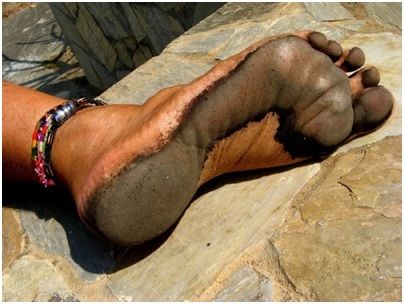
Barefoot Running: Strength before StrideBy Erin Marston of Free Thy Feet (www.freethyfeet.com)
After the release of Christopher McDougall's Born to Run, barefoot running has taken off. Runner's everywhere are shedding their running shoes and hitting the trailsin their naked feet. Barefoot running is now the great debate in the running world.
Last year The Denver Athletic Club hosted The Colorado Endurance Conference and the event concluded with a barefoot running panel. The panel consisted of Alan Culpepper, two time OlympicMarathoner, Eric Mundt, owner ofFrontier Physical Therapy, and Scott Poston, Endurance Coach and Fitness Director of the Denver Athletic Club. These experts advocated barefoot strengthening before barefoot running.
It is true that since childhood we have been walking, running, jumping, and livingmostly in shoes. Many peoplehave supportive shoes orinserts, and spend little time barefoot. According to Eric Mundt, Frontierphysical therapist, the muscles of the foot tend to be very weak and are often overlooked during strength training programs. Most people, especially runners, need greater foot strength.
Simple foot strengtheningexercises include:
· Barefoot walking: Start with 50m of slow heel to toe walking. Progression: try with eyes closed
· Toe crunches: Pulling a towelin with your toes (do this on a slick surface and make sure all your
toes are working together, not just your big toe).
· Single leg barefoot balance: If you’re a pro at balance, try this with your eyes closed.
Strengthening the foot will lead to better biomechanics and fewer foot and lower leg injuries that sideline many runners.









